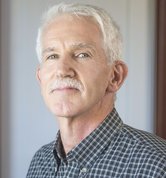Get PolitiFact in your inbox.
Congress holds key on clean energy dollars to poorer communities
Candidate Joe Biden yoked action on climate change to the broader goal of reducing inequality in America. On his campaign website, he promised that disadvantaged communities would get 40% of the "overall benefits of spending in the areas of clean energy and energy efficiency."
That commitment covered a long list of activities, from cleaner mass transit, to retrofitting homes, to upgrading old water pipes.
So far, as president, Biden has taken a number of steps to advance this goal. Whether the money comes through in a major way depends on Congress.
Biden first included the 40% target in his Jan. 27 executive order on climate change. He gave the Council on Environmental Quality and the Office of Management and Budget four months to come up with a list of steps to make the promise real.
Biden followed that up on March 31 with his $2 trillion American Jobs Plan. It called for using tax credits to build "next generation industries in distressed communities." For example, hydrogen can be used to make other things, such as ammonia, or it can be used as a fuel. The first challenge is to produce it without kicking off a lot of carbon dioxide, and the second challenge is to store and move it around. It's an option that's drawing more and more attention. Biden would try to place 15 demonstration projects in poorer neighborhoods.
In April, Biden increased the budget line for environmental justice in the EPA's budget request from about $12 million to more than $900 million.
In May, the White House Environmental Justice Advisory Council delivered the list of recommendations that Biden called for in his executive order. The 90-plus-page report pressed to target 40% of spending in areas such as expanding rooftop solar, job training in the renewables sector, smarter transportation plans, cleaning up past pollution and more.
In the eyes of advocates for struggling communities, this is all good news. But their focus today is on how much actually gets done.
Adrien Salazar, policy director for Grassroots Global Justice Alliance, a partner in the Green New Deal Alliance, said the bipartisan infrastructure bill in the Senate so far lacks any specific set asides for disadvantaged areas. Salazar and his colleagues hope to change that.
But one of the group's top priorities, Salazar said, is to get the right targeting language into the Democrats' massive reconciliation package. That $3.5 trillion legislation follows different parliamentary rules that allow it to pass with Democratic votes alone, and it will reflect Democratic priorities.
A lot hinges on what happens in the next few weeks. As of now, we rate this promise In the Works.
Our Sources
Joe Biden for President, The Biden plan to build a modern, sustainable infrastructure and an equitable clean energy future, July 14, 2020
White House, Executive Order on Tackling the Climate Crisis at Home and Abroad, Jan. 27, 2021
White House, Fact sheet: The American Jobs Plan, March 31, 2021
Resources for the Future, Decarbonized Hydrogen in the US Power and Industrial Sectors, Dec. 21, 2020
White House Office of Management and Budget, FY 2022 budget letter to Senate Appropriations, April 9, 2021
White House, Environmental Justice Advisory Council, Justice40 Climate and Economic Justice Screening Tool, May 13, 2021
White House, Statement from CEQ Chair Brenda Mallory on Recommendations from the White House Environmental Justice Advisory Council, May 13, 2021
Email exchange, Adrien Salazar, policy director, Grassroots Global Justice Alliance, July 18, 2021
